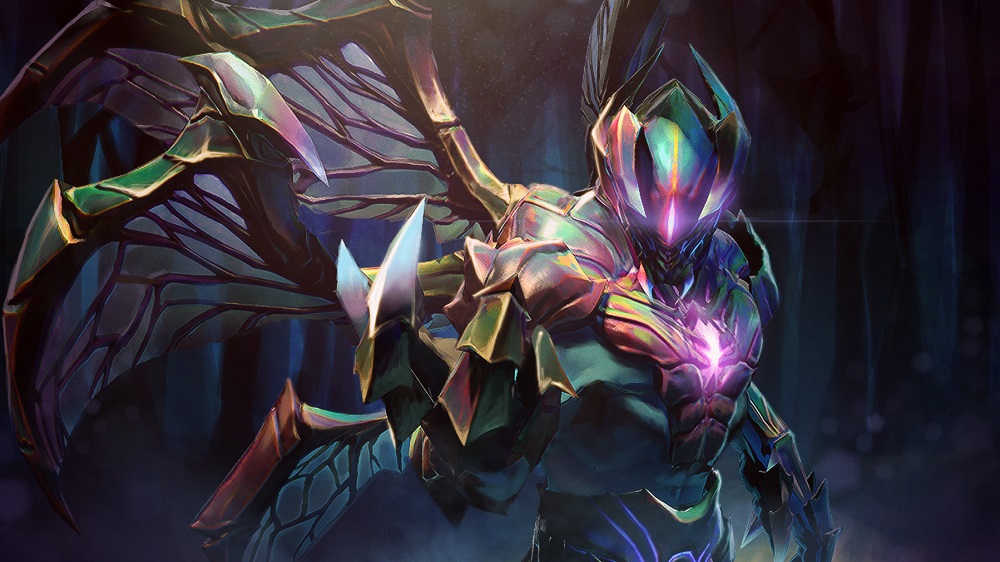Image by style_d
Dota is an incredibly complex game and seemingly small changes can have a massive impact on the meta. Today we are not going to go over heroes who got buffed and are much better off — for the most part this is expected and self-explanatory. Instead, we are going to focus on heroes who are suddenly getting a lot more popular and successful, seemingly out of nowhere.
Our long-time readers are probably well aware of my personal infatuation with the hero. However, even as a long-time Spectre enjoyer, I don’t quite understand why the hero suddenly got a lot better, though I do have some ideas.
The first thing that comes to mind is the change to all the Trinket items in the game. Since they no longer upgrade at the 25 minute mark, the overall survivability levels have decreased, especially on support heroes. That means Spectre suddenly is a lot better off at pickoffs, especially on squishier supports. This means better economy and level progressions, which results in even more aggressive potential later on.
Somewhat related is the change to the offlane meta. We are seeing less aura builders into deathball strategies, and instead more aggressive and less tanky heroes are taking the spotlight. Spectre is a hero who is designed around being a glass cannon hunter. Between Dispersion, its 


Because she benefits from the ability to accelerate through support kills and doesn’t always have to deal with early group-ups, the hero is just naturally more suited to the current meta. That is not always the case and she is definitely a last-pick type of hero, but in games where she feels comfortable, stopping her can be problematic.
Finally, we are also seeing a return to what veteran players will remember as the Badman build. By going early 
All in all, we feel like Spectre is now in a good place and that is without a single change to the hero herself. Just make sure that you go for the Twist the Knife facet, as the Forsaken one is close to unplayable.
The hero got nerfed in 7.37e and is still one of the best position four supports in the current meta. The reasons are somewhat similar to the reasons Spectre is back in favor. There is less deathball, there is more split and farm and Bounty Hunter is very good at setting up solo kills. The extra gold you get and all the gold you force the enemy team to spend on Truesight consumables creates a pretty powerful economic disparity, when BH is played well.
Another great thing about the hero is that he is infinitely adaptable. There are many items he can realistically afford and from game to game it can vary from default defensive 

The fact that the hero is also one of the most oppressive laners with 8.5 starting armor should not be disregarded either. Between built-in armor and a potential 
Yet another non-teamfight hero who is making a comeback off the back of the overall meta changes. Night Stalker, like all pickoff heroes, is reigning supreme right now. Ever since the introduction of facets, his laning stage improved due to the Night Reign forcing night time from the start of the game, so the hero no longer has this weakness either.
The end result is a highly aggressive hero who can attack the backlines and provides his team with a massive tactical advantage through flying vision. The latter should not be underestimated, as it will frequently force supports to do highly inefficient things: make sure that you go 


Make sure you are never greeding up with early Harpoon or Khanda purchases, though. They will delay your key items and will result in a massive tempo loss for you and your team. Pickoff lineups work best when they can continuously make kills and, ideally, transition into objectives off the back of those kills. The moment you become greedy and lose the ability to safely kill and survive is the moment the hero stops working.
Despite being extremely minor, 7.37e had a massive impact on the overall meta. We feel like part of it is the fact that players of all levels are just tired of playing the same style of Dota and are experimenting more, resulting in a rather chaotic and extremely enjoyable game state.
Between these changes and the Crownfall mini-games, we feel like there are literally no reasons to complain about the lack of big balance patches. For two years we had massive game updates early in the year, but it was possible because Valve were allowed to take their time and go beyond what is expected. So let them cook in peace, after a well-deserved rest during the holidays. More great things are sure to come.

